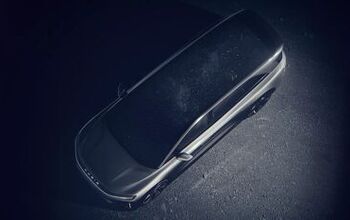Phil's Podium Of The Automotive Pure: Ten Trick Technologies That Changed the Automotive Maintenance & Repair Scene - Part One
Now that I’ve gotten the memory-bile of “Notorious Technologies”— implemented during my ever-progressing automotive maintenance and repair career — somewhat further out of my system, now seems as good a time as any to reflect on some of the technological “bright spots” I’ve come to be acquainted with and appreciate during that same period. Some of these highlights were coming into widespread acceptance way back in the early days of my High School Auto Shop training, while others came considerably later.
In any event, these technologies not only gained widespread acceptance among auto manufacturers then, but they are all still being used by these manufacturers today, a couple of them in a considerably evolved format.
I’ll be listing them in their order of appearance on the scene.
The Disc Brake:
If you’ve read my diatribe directed at the Drum Brake (Phil’s Bin of Automotive Egregiousness—Part One), you know that the Disc Brake is pretty much the polar opposite of that technology.
With its simplicity, stopping power, resistance to fade, durability, reliability and serviceability, it’s no wonder that the disc brake’s tenure is under no threat of termination. This design, augmented by tremendous advances in materials technology, is still being used at the highest levels of motor racing.
In the early days of my mechanical schooling, I remember seeing disc-braking systems mostly on European, English and some Japanese cars, many of which sported non-vented (solid) rotors. They worked excellently, considering the relatively low mass of these cars and the generally modest (by today’s standards) speeds they were capable of generating.
U.S. manufacturers followed suit a couple years after the overseas manufacturers, so by the time I was actually repairing automobiles for pay, many of them had at least vented disc brakes on the front.
Sure, there have been a few developmental dead ends that we techs had to endure. A long-standing example had to be front rotors on rear-drive vehicles where the wheel hub was cast with the rotor. This meant that every time the rotor was serviced or replaced, the wheel bearings had to be serviced, too, whether they needed it or not. Replacement costs for these units has risen with the price of metals, so thankfully, the “composite” rotor has become the standard design today.
The composite design has separate rotor and hub assemblies, with the hub bearings now being a non-serviceable part of the hub unit. In the early days of the composite rotor, some auto manufacturers, apparently wanting to leave some room for further developmental improvements, created the “captive rotor” design, wherein the composite rotor BOLTS to the INSIDE of the hub (usually on the driven hubs), for your servicing convenience. Fortunately, most brake rotors on modern automobiles mount on the other side of the hub, where replacement is usually only one easy step removed from a basic pad replacement. Pure? Most definitely.
The Electronic Ignition:
A once-famous automotive tune-up chain was founded on the constant need for servicing the ignition distributor contact points and condenser.
If the automotive ignition system had started with breakerless (contactless) electronic coil triggering technology, that business niche would not have existed. In fact, with continued advances in electronic ignition technology, including computerized distributorless systems, that once famous business is all but ancient history.
During my schooling years, most vehicles did have contact-style ignition coil triggering, but by the mid-‘70’s — with a few exceptions — virtually all vehicles had some form of electronic ignition systems. By the end of the ‘70’s, I don’t believe any manufacturer was still using contact points systems.
I really haven’t MISSED the old contact points systems.
I will, however, never FORGET having to service some of the more exotic vehicles these systems were featured in. I remember the early Lotus Esprit’s, where the distributor was mounted horizontally, in line with and at the front of the engine, under the intake manifold. It had to be removed by techs with some athletic ability — as the engine was mounted amidships — just to service the contact points and condenser!!
The Catalytic Converter:
Along with a couple of technologies I’ll be covering in one of the next parts of this series, the Catalytic Converter has to be the single most significant emissions control component for automobiles EVER introduced.
A few other technologies had to be developed in order to implement the use of the “CAT”, most of which also had a desired effect in other areas.
A cat wouldn’t work using the leaded fuel available at that time, so unleaded fuel had to be developed. Performance fans bristled at the loss of the few Octane Points that tetraethyl lead had added to their favorite “Hi-Test” or “Ethyl” fuel. Eventually though, manufacturers found a way to exceed the performance boundaries of that time using unleaded fuel of a considerably lower octane rating.
Engine durability issues had to be confronted also, as the lead in the fuel had provided needed lubrication to internal parts, such as piston rings and valve seats.
When these were addressed, engine longevity increased, partly from the use of harder critical component materials, and partly just because of the absence of the lead. Being a solid, the lead tended to accumulate in and around these components — and even more critically on spark plugs — causing what was referred to as “lead fouling”. Typically, spark plugs would only last ten to fifteen thousand miles, and part of their longevity equation had to do with lead accumulation on the plug.
Techs didn’t mind — though I doubt we appreciated it fully at the time — having to handle fuel that didn’t have lead in it, especially since we didn’t have the use of thin Nitrile gloves, as we do now.
Does anybody remember the “Smog Alerts” publicized by local air quality management agencies in urban areas, across the U.S.A?
They weren’t some sort of bureaucratic overreaction boondoggle —t he air was really THAT hazardous! I remember going outside to play in my suburban Los Angeles neighborhood during one of these alerts, and within a couple of hours I was almost overcome by a severe tightness in my chest. Once the brown was gone from the air, I never experienced that sensation again!
Largely due to the implementation of the catalytic converter and supporting technologies, those alerts are a thing of the past in many urban areas.
Phil Coconis is the owner of a West Coast independent auto repair shop.
More by Phil Coconis
Latest Car Reviews
Read moreLatest Product Reviews
Read moreRecent Comments
- Michael S6 Very confusing if the move is permanent or temporary.
- Jrhurren Worked in Detroit 18 years, live 20 minutes away. Ren Cen is a gem, but a very terrible design inside. I’m surprised GM stuck it out as long as they did there.
- Carson D I thought that this was going to be a comparison of BFGoodrich's different truck tires.
- Tassos Jong-iL North Korea is saving pokemon cards and amibos to buy GM in 10 years, we hope.
- Formula m Same as Ford, withholding billions in development because they want to rearrange the furniture.


































Comments
Join the conversation
I was a teen during the 70's and enjoyed a few years of shade tree mechanic work before that new fangled stuff came around. A guy that knew what he was doing (30 years auto shop teacher) taught me how to reassemble a Chevy small block 350, we did it one Saturday night and I was only 45 minutes late for my date! I haven't planned on putting it together then, but when the talent says let's do it, you do it and the girl friend can wait. Weird thing, we broke up before she ever rode in that 68 Chevelle I was rebuilding, it wasn't the car...was it??????
Its amazing to see how far technology has come. Remembered getting my hands dirty back in the day, now almost anything in the car can be fixed with just a computer.